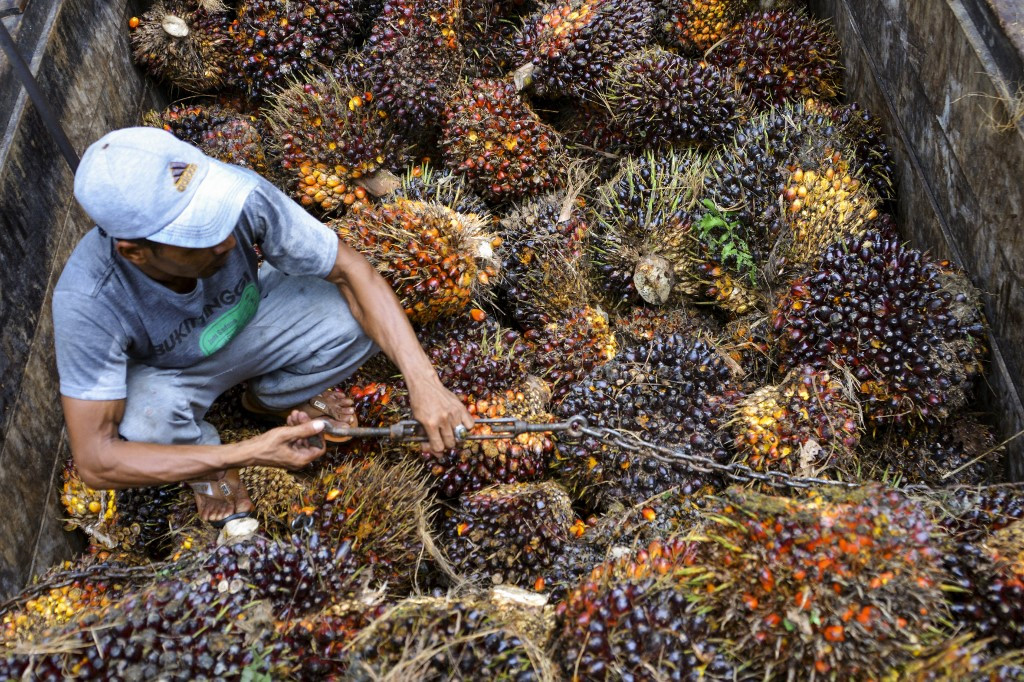Popular Reads
Top Results
Can't find what you're looking for?
View all search resultsPopular Reads
Top Results
Can't find what you're looking for?
View all search resultsShackling the free market
Problems arose after palm oil prices reached historical highs over the last two years, hovering above US$1,000 per ton due to the combination of demand increase and supply disruption in several major producing countries.
Change text size
Gift Premium Articles
to Anyone
T
he prices of commodities such as coal, other minerals, rubber and coffee are highly volatile and influenced by boom-and-bust cycles in the international market. But as long as the commodities are not included in the basic daily necessities of people, the government tends to leave their prices to the free market to determine on the principle of supply and demand.
However, the government should intervene, through various measures, in the market for commodities that are part of the people’s basic needs such as gasoline, rice and lately cooking oil, to control inflation which usually hits the poorest segment of the population the hardest. This is a managed-market economy.
So, we have become familiar with the government’s price stabilization scheme for rice, several horticultural products and beef, which are implemented mostly through nontariff measures such as import quota mechanisms because their high price increases are usually caused by the domestic deficit.
But palm oil, which supplies more than 95 percent of the country’s cooking oil, is different because Indonesia is the world’s largest producer, with national output reaching 42.6 million tons and exports of 29 million tons just in the first 10 months of last year. In fact, the government estimates that 16 million tons of total palm oil export are cooking oil, while domestic needs for households and industries are only around 5.7 million tons a year.
Problems arose after palm oil prices reached historical highs over the last two years, hovering above US$1,000 per ton because of the combination of demand increase and supply disruption in several major producing countries. Cooking oil prices have skyrocketed as well because palm oil companies prefer to export their products.
The government tried to subsidize the retail price of cooking oil with funds from the Palm Oil Support Fund Agency (BPDPKS), which has since 2015 collected windfall tax on palm oil exports. Unfortunately, the price has remained far above the price ceiling of Rp 14,000 (97 US cents) per liter, apparently due to the uncooperative attitude of producers and wholesalers.
We cannot help but share the suspicion of consumer organizations that producers have been engaged in cartel-like prices in the cooking oil market. So, we understand why the government, concerned about inflation, decided on Thursday to impose a domestic market obligation (DMO) of 20 percent of cooking oil exports while setting the crude palm oil (CPO) price at Rp 9,300 per kilogram and olein at Rp 10,300 per kg under the DMO program.
We think there are no strong reasons as to why domestic cooking oil prices should have followed the steep rise in international palm oil prices because Indonesia is the world’s largest producer and exporter of both CPO and palm oil derivatives, including olein-based cooking oil.
Cooking oil producers, which are all large companies, should have cooperated fully and supported the government’s efforts over the last few weeks to stabilize the price of cooking oil at Rp 14,000 per liter. They need only to share a tiny portion of the windfall profits they have gained over the past two years.
The urgent problem for the government now is how to administer the hastily-imposed DMO and get accurate data on the actual production and exports of all cooking oil producers.











